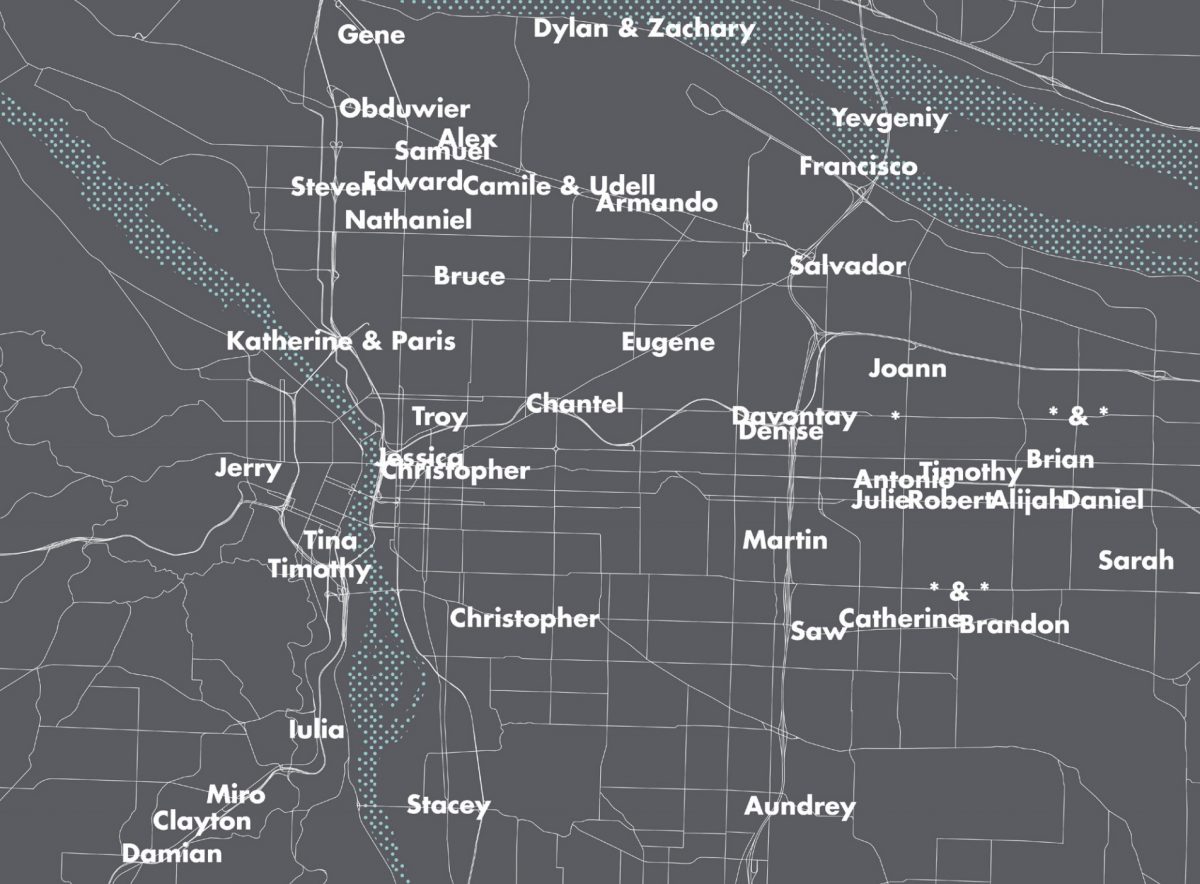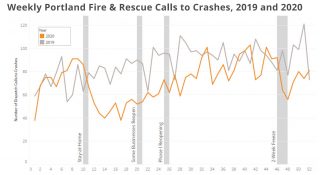
(Source: City of Portland)
Calling it an especially “unusual and tragic” year, the Portland Bureau of Transportation has released its annual review of traffic crashes. Among PBOT’s findings is that Black people made up 10 of the 54 recorded deaths, or 18.5% — more than three times their representation in Portland’s population (6%).
The 9-page report is part of Portland’s Vision Zero commitment to analyze and assess the where/how/when/why/whom of traffic fatalities. Unlike their statement in January that urged “caution and wellness,” and tried to put a positive spin on the highest number of road deaths since 1996, this report offered a more sobering view.
Advertisement
“PBOT recognizes that 2020 was a tragic year of loss and continues to stay committed to eliminating traffic fatalities,” it reads.
And while January’s statement said, “The year 2020 defied historic trends,” this report acknowledges that 2020’s increase in traffic deaths, “extends a trend that began locally and nationally after 2010.”
As for why we saw a spike in deaths, PBOT singled-out street design as a key factor. Speed, impairment, and “dangerous behaviors” were also listed. According to their analysis, 57% of traffic deaths occurred on the city’s High Crash Network, a list of the top 30 streets and intersections where deaths are most likely. This list includes just 8% of Portland’s total street network.
65% of the deaths took place in low-income communities of color. Combined with the disproportionate impact on Black Portlanders we mentioned above, this underscores the urgency of PBOT’s work with the Multnomah County Health Department to embrace a racial equity and public health approach to future investments and policymaking.
This year’s report also included a chart (at right) showing how 911 calls for traffic crashes dropped sharply compared to 2019 levels after stay-home-orders were first given March. The calls spiked up in May and have tracked closely to previous years ever since.
Of the 54 people included in PBOT’s tally, the median age was 36 and ages ranged from 1 to 81 years. 38 of the deaths were male and 14 were female. Twenty of the fatal crashes were on state-owned roads and 8 deaths happened on freeways.
54 deaths in our streets is a terrible number and shows how far we have to go to reach zero by 2025. But it’s worth noting that the actual number of people who died on Portland streets is higher than the official tally from PBOT.

Advertisement
The Portland Police Bureau recorded 58 total fatalities (according to information we received in a public records request). We have 59 on our tracker. The discrepancies exist because PBOT adheres to National Highway Traffic Safety Administration reporting criteria that excludes deaths that are intentional (suicide and homicide), don’t involve a motor vehicle (car), are the result of a prior medical event, occur more than 30 days after the crash, or that happen in a parking lot.
This means official counts won’t include:
— 47-year-old Trecell Stinson who was killed by a driver on January 24th while sleeping on the ground in the parking lot of an apartment complex in the Powellhurst-Gilbert neighborhood on SE 92nd.
— 22-year-old Addison Loda who was on foot when he died in a collision with a MAX train operator on SW Yamhill Street on June 20th.
— A 35-year-old woman whose death while walking on the I-5/Interstate Bridge in September was ruled by the PPB an intentional act.
— A 50-year-old woman who died after she was crushed to death between a semi trailer and loading dock while walking in the parking lot of a freight company on Swan Island on MAy 14th.
We have four years to eliminate these tragedies. The trendlines are not good and something must change. Soon.
View the report here (PDF).
— Jonathan Maus: (503) 706-8804, @jonathan_maus on Twitter and jonathan@bikeportland.org
— Get our headlines delivered to your inbox.
— Support this independent community media outlet with a one-time contribution or monthly subscription.



